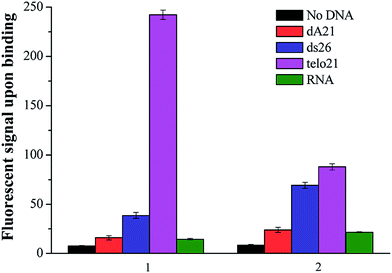 Open Access Article
Open Access ArticleCreative Commons Attribution 3.0 Unported Licence
Correction: A study on a telo21 G-quadruplex DNA specific binding ligand: enhancing the molecular recognition ability via the amino group interactions
Dongli Liab,
Jin-Qiang Houc,
Wei Longc,
Yu-Jing Lubc,
Wing-Leung Wong*ab and
Kun Zhang*ab
aSchool of Chemical and Environmental Engineering, Wuyi University, Jiangmen 529020, P. R. China. E-mail: kzhang@gdut.edu.cn; Tel: +86-20-39322235
bInternational Healthcare Innovation Institute (Jiangmen), Jiangmen 529040, P. R. China. E-mail: wingleung@wyu.edu.cn; Tel: +86-0750-3299391
cInstitute of Natural Medicine and Green Chemistry, School of Chemical Engineering and Light Industry, Guangdong University of Technology, Guangzhou 510006, P. R. China
First published on 22nd June 2018
Abstract
Correction for ‘A study on a telo21 G-quadruplex DNA specific binding ligand: enhancing the molecular recognition ability via the amino group interactions’ by Dongli Li et al., RSC Adv., 2018, 8, 20222–20227.
The authors regret that ds26, telo21 and RNA were labelled incorrectly in Fig. 2 in the original manuscript. The corrected Fig. 2 is displayed below.
The Royal Society of Chemistry apologises for these errors and any consequent inconvenience to authors and readers.
| This journal is © The Royal Society of Chemistry 2018 |

